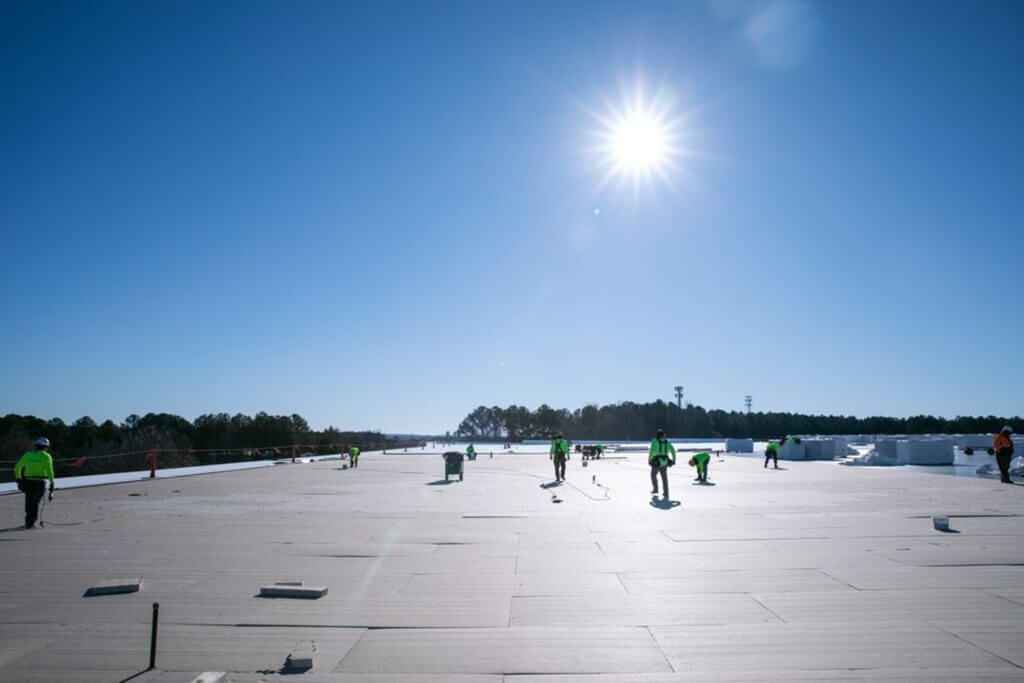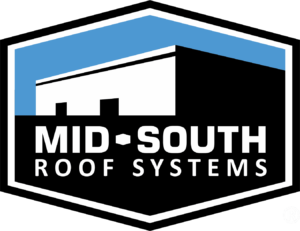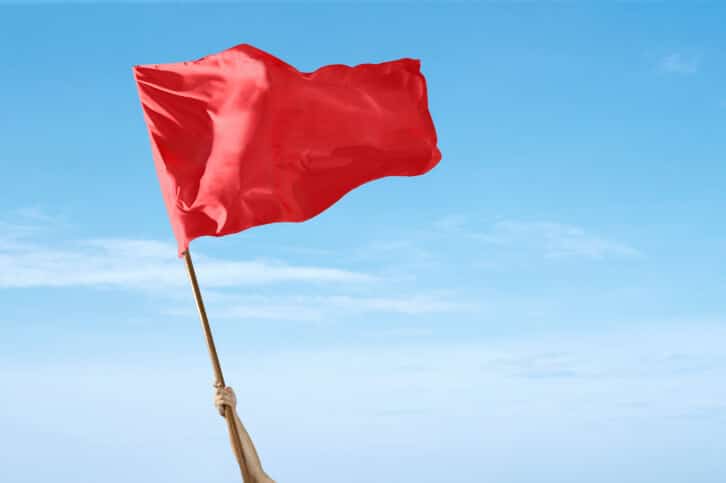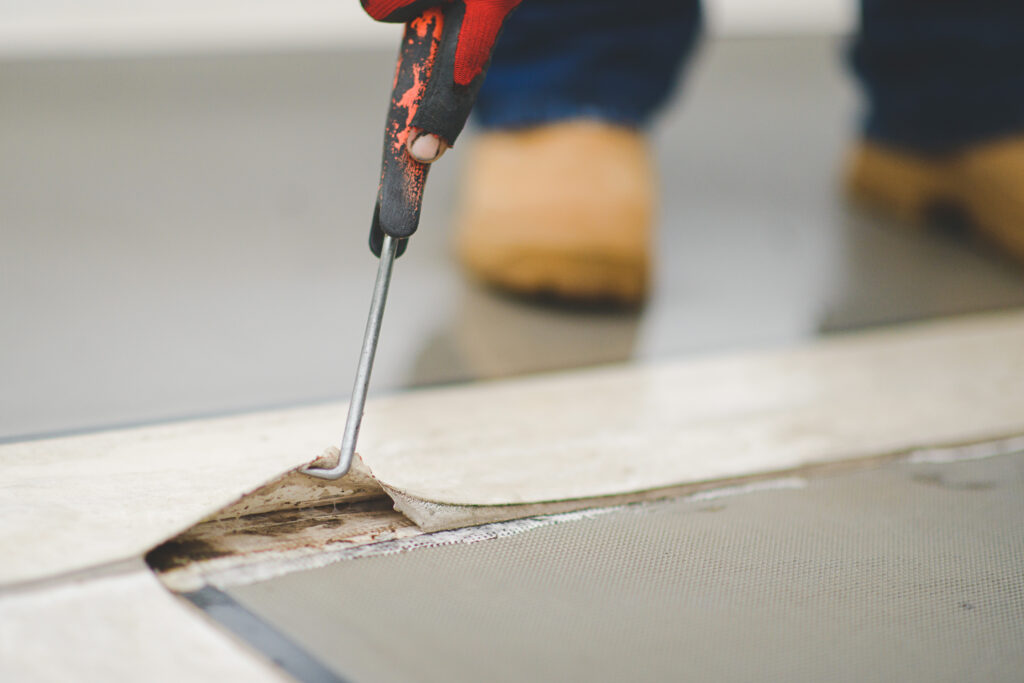How Different Elements Can Impact Your Commercial Roof


Maintaining a commercial building is a major responsibility. The large surface area of a commercial roof is always exposed to the elements. The first step to protecting your roof from various, changing weather conditions is understanding how natural hazards in your geographic region can impact your roof. When considering the different types of weather that can cause damage, we group these hazards into two categories: those that cause immediate damage to the roof and those that weaken the roof over time.
Immediate Damage
Wind
High-velocity winds occur during a variety of weather events and can cause immediate and catastrophic damage to your roof. The wide, exposed area of commercial buildings makes them particularly vulnerable to high-velocity winds. This is one reason why it’s critical to hire an experienced commercial roof team to ensure your initial design is wind-resistant. Winds can push inside the building through weak points in your system and impact the roof by blowing inside via dock doors, ventilation units, or connection lines.
Another damaging effect of high-velocity winds is wind-borne debris. This includes both objects that the wind moves onto your roof or pieces of your roof system that become detached. Wind-borne debris can cause physical damage and water ponding on the roof if left unchecked after a weather event.
While some acts of God (like hurricanes and tornados) are simply too powerful and concentrated to avoid damage, you can protect your commercial roof from high-velocity winds by making sure your building is well-maintained and clear of debris. If you’ve experienced a high-velocity wind event, keep an eye out for leaks, debris, or roof components that may have come loose.
Heavy Rain
Heavy rain often accompanies high-velocity winds. Your roof is designed to shed water, but a significant amount of fast, heavy rain can cause stress on drainage systems. When your commercial roof is installed, the type and scope of drainage systems are usually calculated based on the average rainfall in the building’s location. If a weather event exceeds that normal, it can expose a problem with your drainage system. For example, a clog can cause ponding on your roof, or uncharacteristically heavy rain could blow out a gutter or cause stress on an internal drain.
If you experience a severe rain event and suspect your drainage system didn’t handle it properly, look for leaks or pooling water as signs of rain damage.
Lightning
Lightning can also cause catastrophic damage to your building. If lightning directly strikes your roof, you may find burn holes or other visible signs of damage. In this situation, you’ll want to schedule a professional to inspect your roof as soon as possible and assess the full extent of the damage. To diffuse lightning strikes, you can explore the option of installing a lightning protection system.
Hail
Hail forms when rain droplets are blown back into extremely cold areas of the upper atmosphere and freeze. Depending on the size and speed at which it falls, hail can severely damage your roof. Hail damage evidence can be hard to find, however. You may not immediately see an obvious leak following a weather event. Instead, the repetitive, widespread impact will cause stress that can lead to cracks in your membrane.
Repairing individual instances of hail damage can be difficult. A hail storm could yield numerous impact points. A roofer can patch one leak that will only be followed by a series of pinhole leaks a few months later. A professional looks for dents across the roof and other components, such as HVAC units, depending on the hail’s size and impact.
Areas that are prone to hail may call for extra preventative measures. In some situations, a professional roofer will recommend DensDeck, a product that provides a hard, sturdy surface underneath the roof membrane. When hail hits the roof, DensDeck gives impact resistance and offers extra protection for the membrane. For a new roof, a thicker membrane may be recommended to keep hail damage at a minimum.
Snow and Ice
Snow and ice make any existing problems worse. Thick snow adds weight to the roof, putting stress on the building structure. Additionally, the snow removal process can also cause damage. Freezing water will expand into the roof’s seams, leading to cracks and deterioration of the roof system elements.
You can proactively prepare for snow and ice’s negative impacts by keeping up with regular roof maintenance and inspections. Early detection will allow you to address weak points in your roof before they are exposed to the elements. After a heavy snowfall, make sure the proper methods are being employed to remove snow carefully.
Long-Term Threats
UV Exposure
Under prolonged sun exposure, roof systems will naturally age and fade. This process can’t be prevented or stopped, but it can be slowed with UV-resistant materials. When planning a full re-roof project, ensure that your roofer intends to use products that meet this qualification.
Temperature Cycles
Seasonal weather changes and extreme temperature cycles cause roof system stress. An experienced commercial roofing contractor knows what to look for during routine maintenance and inspections. The professional will use this information to assess how your roof is aging as it’s exposed to the elements. A good roofer should be able to guide you in the next steps to take based on your roof’s warranty and predicted lifespan.
The Number One Cause of Damage
What is the number one cause of commercial roof system damage? The simple answer is people. Over time, if people continuously access your roof to maintain equipment, the high level of foot traffic will weaken the roof system. By monitoring and controlling roof access, you can better manage foot traffic and reduce the need for significant repairs.
Why Awareness is Key at Mid-South
As a building owner or manager, you may not think about your roof until there’s a problem. The reality is that your roof is always working to protect your assets and employees. At Mid-South, our goal is to create awareness of your roof system so that you can take a proactive approach to manage your building. Planning for and responding to large weather events using regular inspection and maintenance will give you the assurance that your roof is in good condition and ready to face the elements.
LIKE WHAT YOU JUST READ?
Sign up for our newsletter to get fresh articles, updates and more!
Red Flags That You Have Hired the Wrong Roofer
There’s a lot of responsibility involved in putting a roof over someone’s head. Roofs provide us shelter, safety and warmth; so we shouldn’t trust just anyone to provide and install this complex component of a construction project. A good roofing contractor provides not only skilled craftsmanship, but honest, open communication, plus a commitment to get…
The Importance of Roof Clean Up
A solid, well-maintained roof is the first line of defense for any commercial building, protecting your business, employees, and customers from the elements. When it comes to roofs, regular roof clean up and maintenance are just as critical as installation and choice of materials. At Mid-South Roof Systems, we understand that your roof is a…


